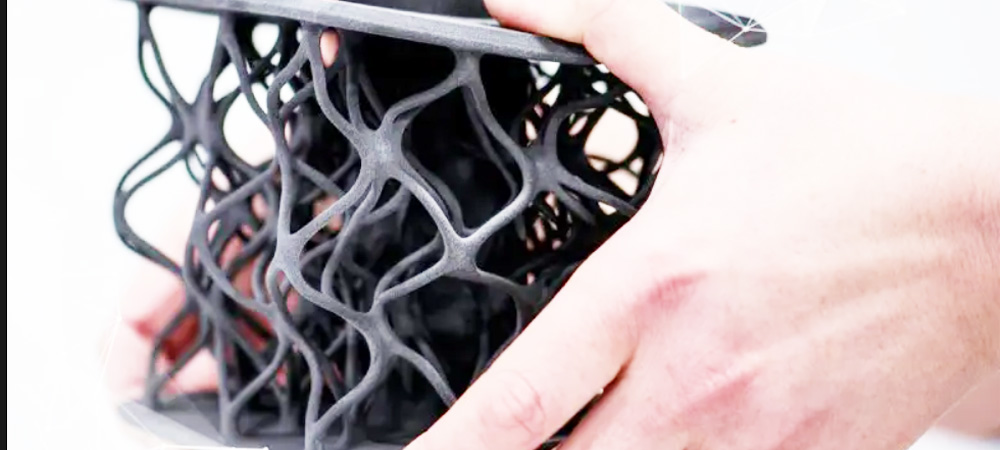What is MJF
MJF is abbreviation of MultiJet Fusion, its operation is similar fashion to 2D printers. The print-head dispenses photosensitive material droplets, then solidifies under UV light, produce a part layer-by-layer. The MJF materials are thermoset photo-polymers in liquid form.
MJF printing creates parts in high dimensional accuracy with smooth surface finish. A wide range of materials like ABS-like, rubber-like and fully transparent materials are available in MJF. These characteristics make MJF a attractive option for visual prototyping and molds manufacturing. We also need to realize the key limitations in MJF.

How MJF work
MJF manufacturing process:
- Liquid resin will be heated to achieve optimal printing viscosity at 30-60 ℃.
- The print-heat move over the build platform, deposit hundreds of tiny photo-polymer
Droplets to the desired location.
- The UV light, which is attached to the print-head, will cure the deposited materials, solidify them and create the first part layer.
- Once a layer is complete, the build platform will move downwards one layer height, then repeat this process until the whole part is finished.
MJF deposit material in a line-wise fashion, which is different other 3D printing technologies. Multiple print-heads can be attached to one carrier side by side, then deposit different materials in a single pass. This allows different heads to deposit different materials, so we can use MJF for multi-material printing, full-color printing and solvable support dispensing widely. Support structures are required in MJF, and need post-processing to remove.
In MJF, all liquid material is solidified through a photo-polymerization process. MJF parts have homogeneous mechanical and thermal properties. In addition, MJF don’t need post-curing to get optimal properties, in reason of very small layer height.
MJF Characteristics
Printing machine parameters
In MJF, all process parameters are pre-set by the machine manufacturer. As layer height is linked to every specific material, the typical layer height is 16-32 microns in MJF.
MJF is one of the most accurate 3D printing technologies. It has a dimensional accuracy of 10% with a typical limit of ± 0.1 mm. As MJF can be processed near room temperature, warping is not as common as other technologies. Its typical build size is approximate 350×250×250 mm, while largest can reach to 1000×800×500 mm.
Multi-material & Full-color printing
MJF has the ability to create accurate multiple materials and colors products, which is the key advantage of this technology. Multi-materials and multi-colors in MJF can be divided into three different levels:
- Build area level, different materials or colors can be printed simultaneously on different parts.
- Part level, different materials or colors can be printed on different part sections.
- Material level, 2 or more resins can be mixed in different ratios, in order to create materials with specific physical properties like hardness, stiffness and hue.
Support structures
MJF also require support structures in printing process, these support are always printed by secondary solvable material, which can be removed by pressurized water or ultrasonic bath. MJF parts surface are normally very smooth with little indication of support structure removal. MJF part orientation is more flexible than other 3D printing technology. It is still important, in reason of support materials will increase the overall cost.
Matte & Glossy
MJF provides the option of glossy or matte setting.
In the glossy setting, support structure will be added for structural requirement. Surface without contact with support will be glossy finish, while supported areas are matte. This setting are normally used for smooth shiny surface requirement with less cost and less material usage. The drawbacks of this setting are final parts non-uniform finish and slight rounding of sharp edges and corners.
In the matte setting, regardless of orientation or support requirement, the whole part will add a thin layer of support materials, make all surface in a matte finish. This setting are used for accuracy and uniform surface finish, it will increase printing cost, materials usage and post-processing time. We should notice that this setting will result to lower surface hardness.
Common MJF Materials
MJF apply thermoset photo-polymer resin, they are brittle, low temperature and susceptible to creep. Multi-material printing is the key strength of MJF, it can create accurate visual and haptic prototypes with special materials for specific application.
We summarize the advantages and disadvantages of common MJF materials:
| Materials | Characteristics | |
| Advantage | Disadvantage | |
| Standard | Rigid opaque plasticSimulate plastic injection molded parts | Brittle |
| Flexible | Rubber-likeCustomize hardness | Poor elongation |
| Simulated Polypropylene | Simulate PP partsExcellent flexural strength | Brittle |
| Simulated ABS | High temperature stabilityApplied for molds | Brittle |
| Castable | No ash after burnoutOptimized for investment casting | |
| High temperature | Up to 80℃ temperature stabilityHigh strength | Brittle |
| Transparent | Glass-like appearance100% clear after post-processing | |
| Medical Grade | SterilizeShort-term bio-compatible | Dental and medical applications |
MJF Benefits & Limitations
MJF Benefits:
- MJF can produce smooth parts with very high dimensional accuracy.
- MJF parts have homogeneous mechanical and thermal properties.
- MJF can create accurate visual and haptic prototypes with multi-materials.
MJF Limitations:
- MJF parts are only suitable for non-functional prototypes, in reason of the poor mechanical properties.
- MJF parts mechanical properties degrade over time in reason of photosensitive materials.
- High cost of MJF make it not suitable for some special applications.

